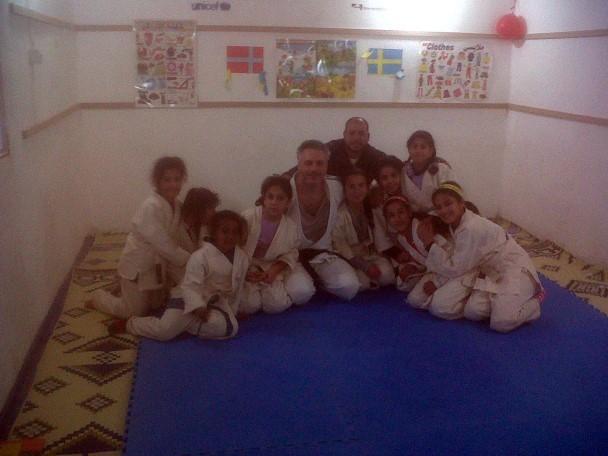He does as a volunteer for the NGO Terre des Hommes in the field that offers psychological and medical assistance. Gianluigi Hall, Monza is a computer scientist working as a freelancer. But it is mainly a teacher of judo. In these days of celebration, left behind his parents and his girlfriend ("I'm sorry but understand"), Gianluigi is located at Al Hol camp that houses Palestinian refugees come from ' Iraq. The volunteers 'Christmas' has gone from about two weeks, and its mission, to teach judo to children of the village, will last about a month.
"Trying to practice judo in a refugee camp - the man says - is a challenge to those who live in discomfort. An idea that did not make me sleep before leaving." "In my classes - says the volunteer - involved around 40 children, divided into groups for males and females, thereby respecting their culture. I am struck by their enthusiasm. They have a great desire to have fun, to find a alternative way to spend the day which is usually monotonous. I found people very polite, any kind of aggression, no particular difference with the kids I know in Italy. "But why did judo in a refugee camp?" This martial art - the teacher says - allows the management and control of 'aggression. During combat, the body of the companion is never abandoned, even when it falls. In situations of distress, how can it be a conflict, judo has an objective motor but also processing of the forms of aggression, anger not recorded. It 'important to understand and feel that violence does not pay. In judo it is said: 'better use of energy ".
It 's the monotony of the field that affects Gianluigi: "the expectation is that all the refugees were down. The families also waiting for years to have the assignment to a host country, giving them the opportunity to a new life.
A hope that is common to all human beings and that in latita, remains suspended as in a limbo. It 's a situation that mainly affects children. I have known such a boy, Omar , passed from one field to another: you entered at 17, now has 22. I am a witness to this constant hope, lived trying not to let go. The only comfort is religion. As they say here, 'Inshallah', 'will be what God wants'. "
I nsieme other humanitarian workers with young people and children - highlights Gianluigi - "also play football, here is the most popular, basketball, frisbee. All activities received more positive. My satisfaction is seeing these young people enjoying themselves as I enjoy it too. "


























